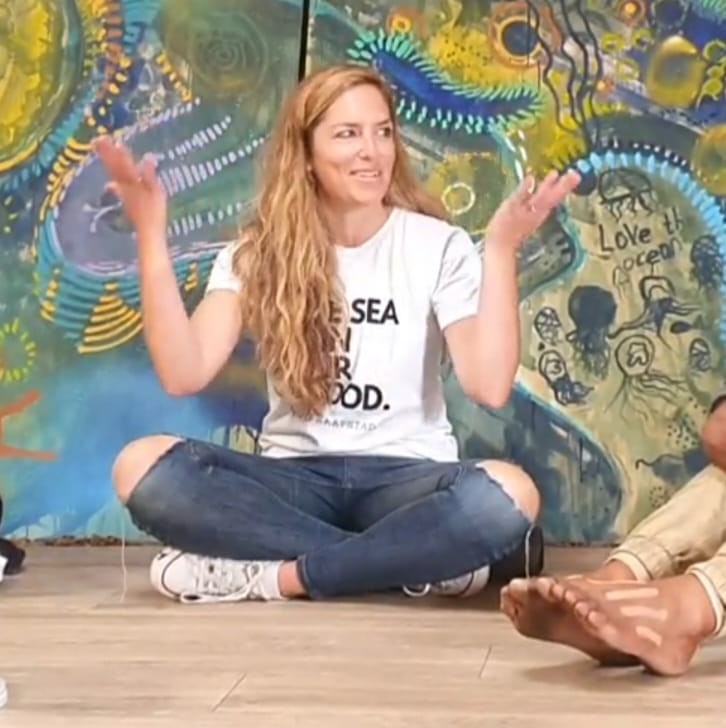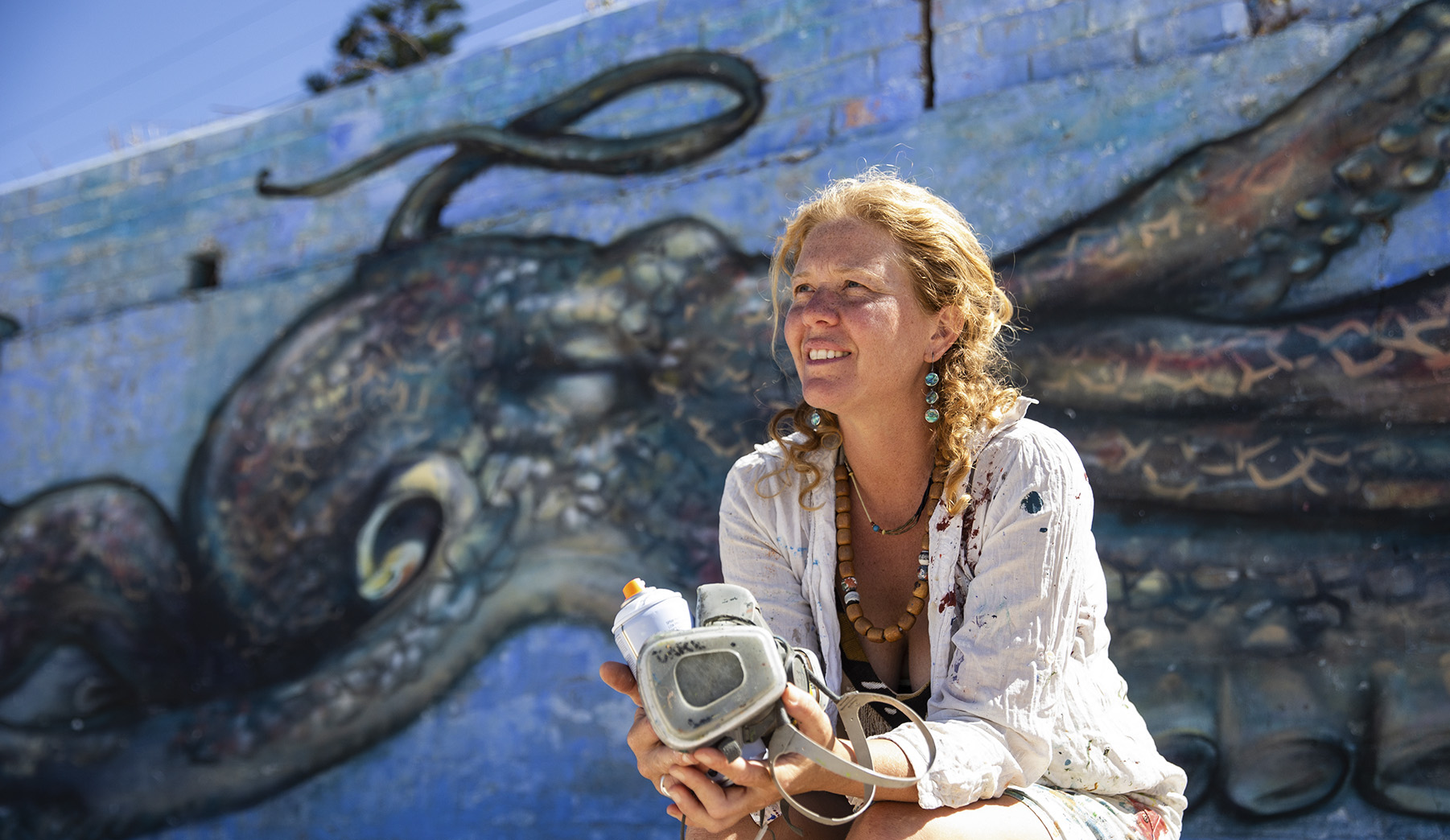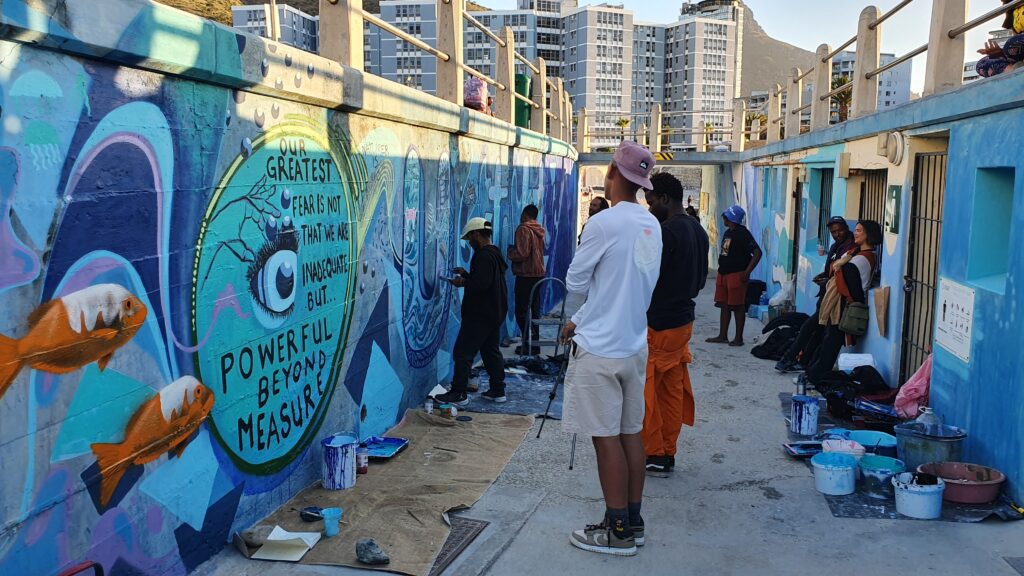Creative expression and art has the power to convey complex issues such as the impacts of climate change, food crises, pandemics and economic uncertainty into accessible and compelling forms. Creative expressions like murals can visually represent challenges communities face and the resilience strategies they employ to navigate through change. Performing arts can communicate stories of resilience, evoking emotions and inspiring action. Sharing recipes and showcasing indigenous, climate-smart meals and ingredients not only highlights the importance of local knowledge but also fosters a deeper connection between culture and climate resilience. Citizen science engages communities in data collection, making evidence more accessible and participatory, while filling crucial data gaps.
The “Knowledge into Use” awards identify innovative and creative ways of showcasing resilience evidence. This year’s contest focuses on the themes – Food, Finance and/or Communities. We call upon individuals and organisations to tap into their artistic potential, merge it with sound evidence, and showcase it through art. Prizes of 100,000 Swedish Krona will be awarded to the winners across three categories: performing arts , visualising evidence , and participatory approaches connecting arts and science . Entries ideally connect people and nature, and clearly build on and cite peer-reviewed articles, grey literature, and/or peoples’ experiences.
Examples of former Knowledge into Use award winning projects:
Youth Innovation Lab (YI-Lab) created a Flood Mural based on data from their Bipad Portal Platform to visually represent risk and convey the significance of data-driven decisions. In their theatre performance, ‘Burnt’, Noble Arts communicated the challenges of climate change and conflicts while showcasing the resilience of individuals and communities.
The Mentorship
This year, we’ve added an important element of mentorship. Mentors will lead workshops as expert speakers, sharing their insights into the intersection of arts and evidence. They will offer tailored support to winners through one to two need-based virtual meetings, ensuring personalised guidance to maximise project impact. We are excited to introduce our mentors:
Rohan Chakravarty is a cartoonist, illustrator and the creator of Green Humour, a series of cartoons, comics and illustrations on wildlife and nature conservation. Cartoons and illustrations from Green Humour appear periodically in newspaper columns, magazines and journals. Rohan is also the author of seven books (including the Penguin publications ‘Green Humour for a Greying Planet’, ‘Naturalist Ruddy’, and ‘Pugmarks and Carbon Footprints’) and has won awards by UNDP, Sanctuary Asia, WWF International, the Royal Bank of Scotland and Bangalore Literature Festival for his work.

Dr Nadia Sitas is an academic working in the science-policy interface on issues related to social-ecological resilience She is currently the thematic lead on Ecosystem-based Adaptation for the Climate and Development Knowledge Network (CDKN) and a Research Fellow at the Centre for Sustainability Transitions at Stellenbosch University. Nadia supports the work of Youth Nature Futures, a collaboration between researchers, practitioners, artists and activists supporting transformative work with youth in Africa.

Claire Homewood from CareCreative is a Cape Town-born artist based, who is inspired by wild nature and the importance of environmental concerns. Her projects are aligned with the values she cares about – resilience, participation, nurturing integrated, healthy environments & people. Claire works between scientists, environmentalists, educators, researchers, and communities to create visual bridges and interactive platforms. She uses creativity to have conversations around important topics, co-designing, and painting public murals

Apply by the 26th of May to participate in the Knowledge into Use awards!
Contest Guidelines
What to submit:
Please submit the following:
- A written concept note to describe the project background and evidence behind the art; the art approach/method you will use and the team composition. The concept note/ idea should be brief on the evidence generated or being documented on enhancing resilience. For instance, mangroves have the potential to act as resilient natural infrastructure to manage storm surges and support community livelihoods. If this knowledge is depicted through an entertaining comic strip or a game to spot existing mangrove patches and their species, then those could be contenders for the award
- Pictures or videos of existing prototypes, if any, are welcome.
What does a good concept note look like?
We expect the written concept note to be concise and backed with relevant literature (both peer-reviewed and/or grey literature is welcome) on the substantive elements of the evidence being documented/ identified. The first part will introduce the problem and the evidence (1500 characters max). The next introduces the method or the art to put that knowledge or evidence into use (1500 characters max). In the final part, tell us about the team (1500 characters max) – who are the research experts, artists and innovators in the team, and what sparked their journey as collaborators.
Eligibility criteria
- The entries should be from registered organisations only.
- If individual artists, science communicators or knowledge brokers want to apply, they can partner with registered organisations. The grant contract can only be awarded to a registered organisation.
- Organisations and candidates based in the Global South and youth-led organisations are strongly encouraged to apply.
Guidelines
- The concept note/idea should be brief and based on sound evidence, i.e. it is necessary to cite evidence in the form of reports or research papers to build a case for the resilience of knowledge put to use;
- The funding award should be used for new pieces of artwork that builds on results from existing research.
- The medium of expression can be (but not be limited to) games, comics or graphic arts, performing arts, etc;
- Harmonising science with elements of justice, equity and indigenous and local knowledge expressed creatively using the evidence that exists on these themes is highly encouraged;
- The winners will be selected based on creativity in expression and sound evidence base of knowledge as expressed in the application;
- The grants aim to enable the teams to implement or express the idea creatively in time for a potential exhibition at the New York Climate Week in September 2024 or any other suitable event like Gobeshona 2025.
Expected deliverables
- 1 art installation or a diverse range of creative outputs, such as well-produced performance videos, visual graphics, cartoons, recipes, and citizen science initiatives like murals, showcasing the project’s vision and concept
- Process documentation (script + motivation of performance art, description of participatory approaches, etc)
- At least 2 social media posts (high resolution photos, short videos, etc)
- At least 2 Resilience Resources (either story or solution) on the Resilience Platform
Submission and deadlines:
Submit the concept note and the creative piece that adheres to the instructions above in this google form by 26th May 2024.
What is in it for the winners?
- Receive a grant of 100,000 Swedish Krona to develop their creative resilience project;
- Exhibit their creative art work during Gobeshona 2025 or New York Climate week 2024;
- Become a part of a growing community of practice on resilience evidence, called the Resilience Evidence Coalition
- Get invited to participate in GRP and partner events like CBA, Gobeshona, etc;
- Get support from the GRP communications team to write stories on the progress made in the project and publish in the Resilience Platform and GRP website’;
- Coordinate with the GRP communications team to create social media products for outreach of their organisation and products.
Judging Criteria:
The submissions will be judged by a panel consisting of experts. All decisions will be final and not appealable. The entries will be judged on the following criteria:
Creativity and Originality
- How well does the project harness the power of artistic expression to convey resilience evidence in a compelling and emotive manner?
- How innovative and unique is the artistic approach in visualising resilience evidence?
Evidence base of knowledge
- To what extent does the concept note incorporate existing literature to support the evidence-based approach?
- How well is the artistic expression grounded in scientific knowledge related to resilience?
- Does the project introduce new evidence or insights in resilience or contribute to existing knowledge in a meaningful way?
Impact and Engagement
- Is the arts-based approach effective in disseminating, capturing or driving collaboration for resilience building?
- How many individuals or communities do the initiative engage with and have a positive impact?
Collaboration and Team Composition
- How well does the team composition demonstrate a collaborative effort between research experts, artists, and innovators?
Clarity and Communication
- Is the concept note well-written, concise, and effectively communicates the artistic vision and evidence-based rationale? Does the proposal clearly articulate the project’s goals and potential outcomes?
TIMELINE
The contest will begin in June and the final outputs should be ready by November 2024
